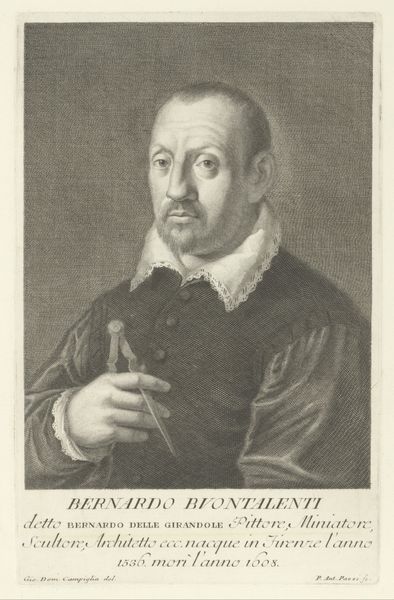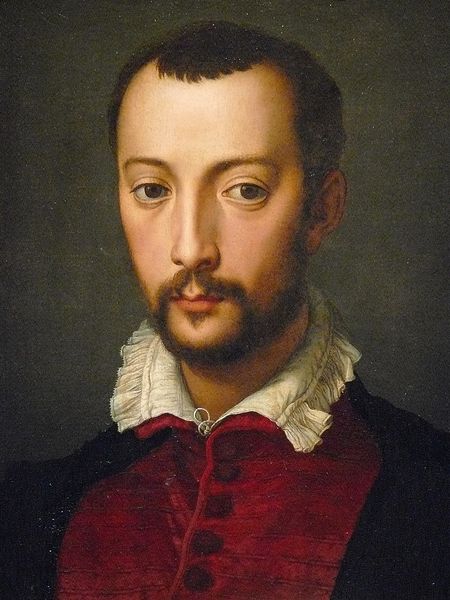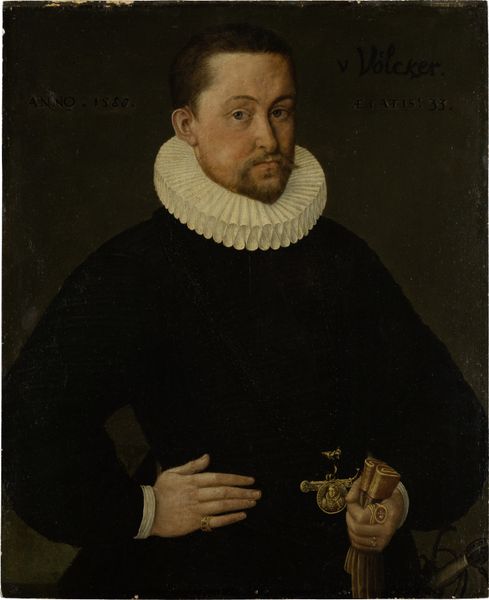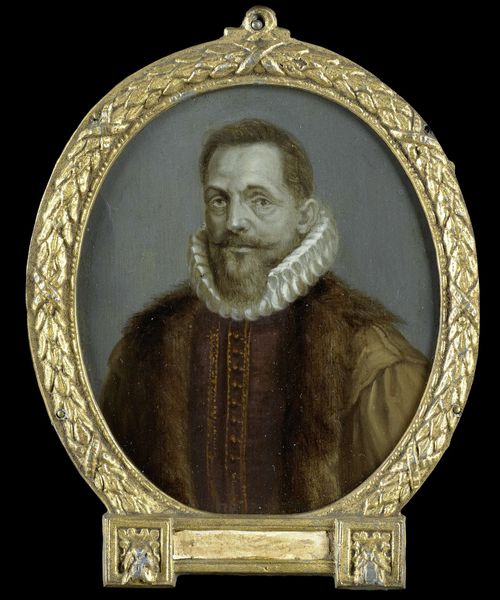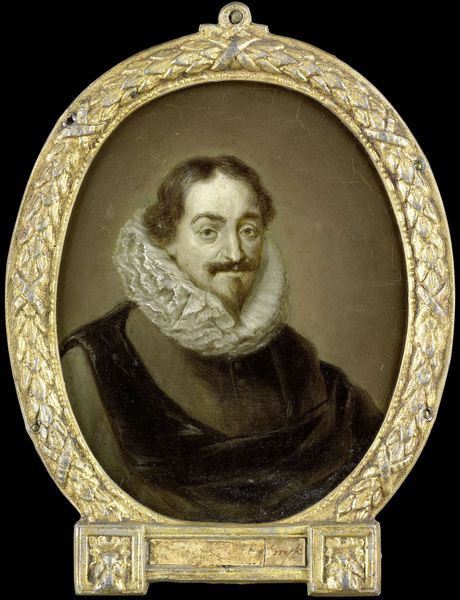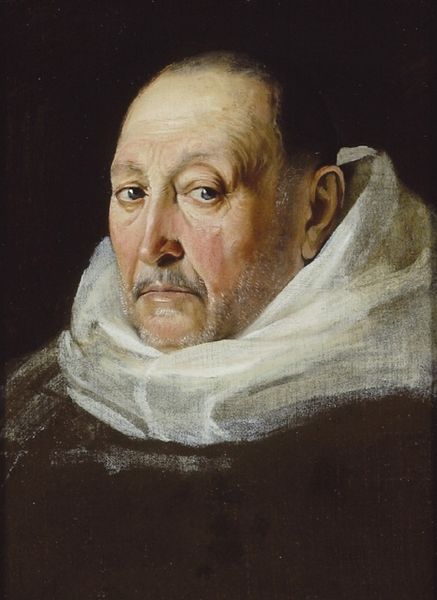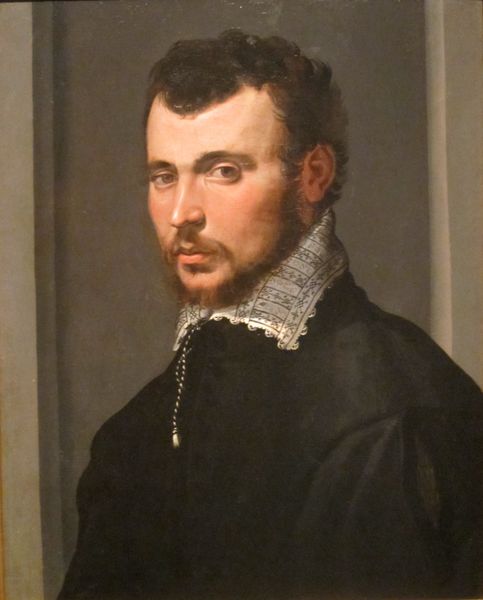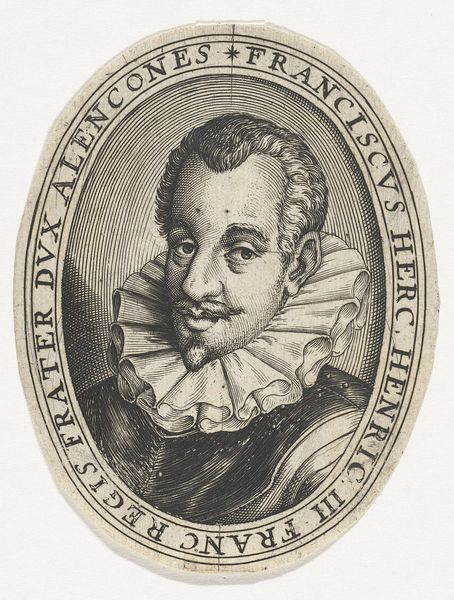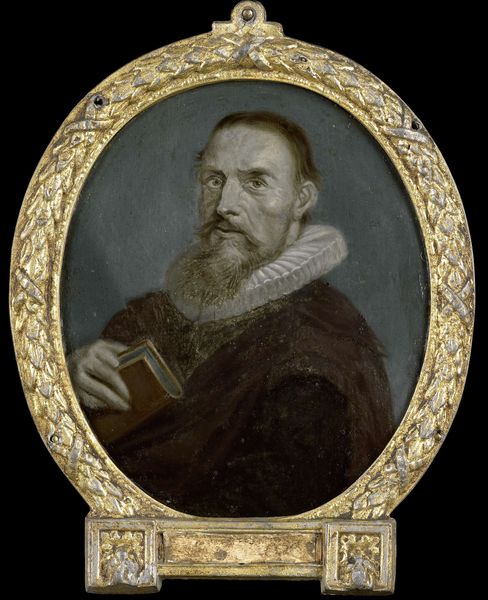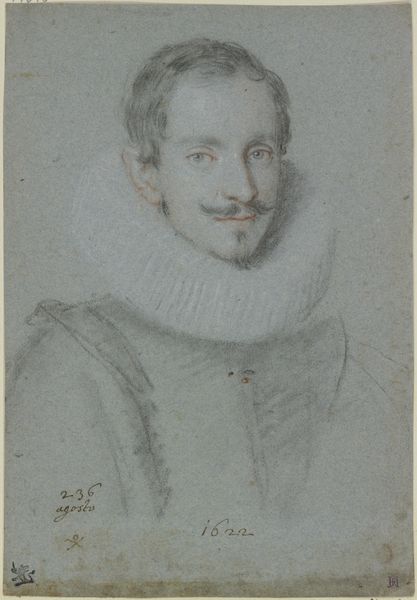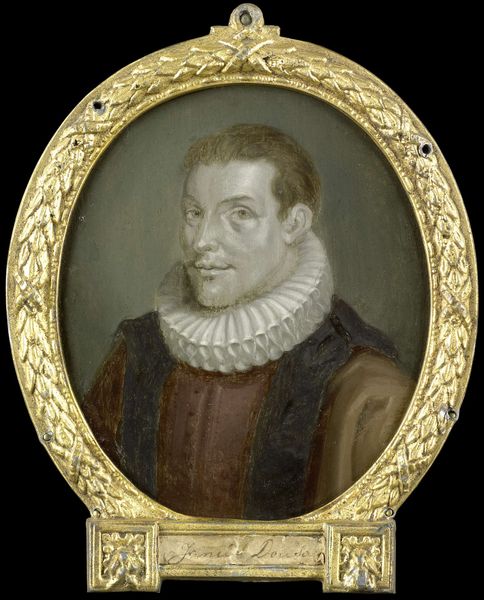
painting
#
portrait
#
painting
#
mannerism
#
11_renaissance
#
history-painting
Dimensions: Diameter 4 7/8 in. (12.4 cm)
Copyright: Public Domain
Curator: Let's turn our attention to this small but striking work from the late 16th century, "Portrait of a Man," currently attributed to an anonymous artist. It's housed here at The Met. Editor: It's such an intimate piece! There's a melancholic air about this man, almost vulnerability, enhanced by the small scale and soft light. I immediately want to know his story. Curator: The context surrounding portraiture during this era is fascinating. As Mannerism gained popularity, so did an increasing interest in individualism and representing personal identity. These portraits functioned not only as records but also statements of social standing. We see this man’s careful attire, his starched ruff collar indicates some wealth. Editor: Absolutely. That stiff, elaborate collar is such a marker of status and power! However, it's intriguing to analyze how this presentation of authority coexists with the evident softness of his expression. It is a study in contradictions. Could this have anything to do with his positioning within a patriarchal system of oppression or the anxiety around his identity and place in that system? Curator: That's an interesting perspective. Looking at this from a social history point of view, it's important to consider the conventions around portraiture and class. During this time, the consumption and commissioning of portraits, especially among the emerging merchant class, shifted the function of imagery away from the traditional purview of aristocracy and religion and more toward asserting an image of power within new emerging social systems. Editor: So much about art relies on social history and theory, even these smaller portraits. This gentleman might present certain external features related to high status, and we should critically look at what’s communicated nonverbally through expression, style, and yes, that fantastic, yet cumbersome ruffle, and what tensions arise there. This painting reveals not only status, but perhaps hints at social confinement in that role. Curator: Yes, indeed! Thanks to understanding its context and its construction, "Portrait of a Man," though from an unknown artist, continues to resonate deeply centuries after its creation. Editor: It underscores, yet again, how art becomes a site of inquiry into both individual expression and broader societal pressures.
Comments
No comments
Be the first to comment and join the conversation on the ultimate creative platform.

